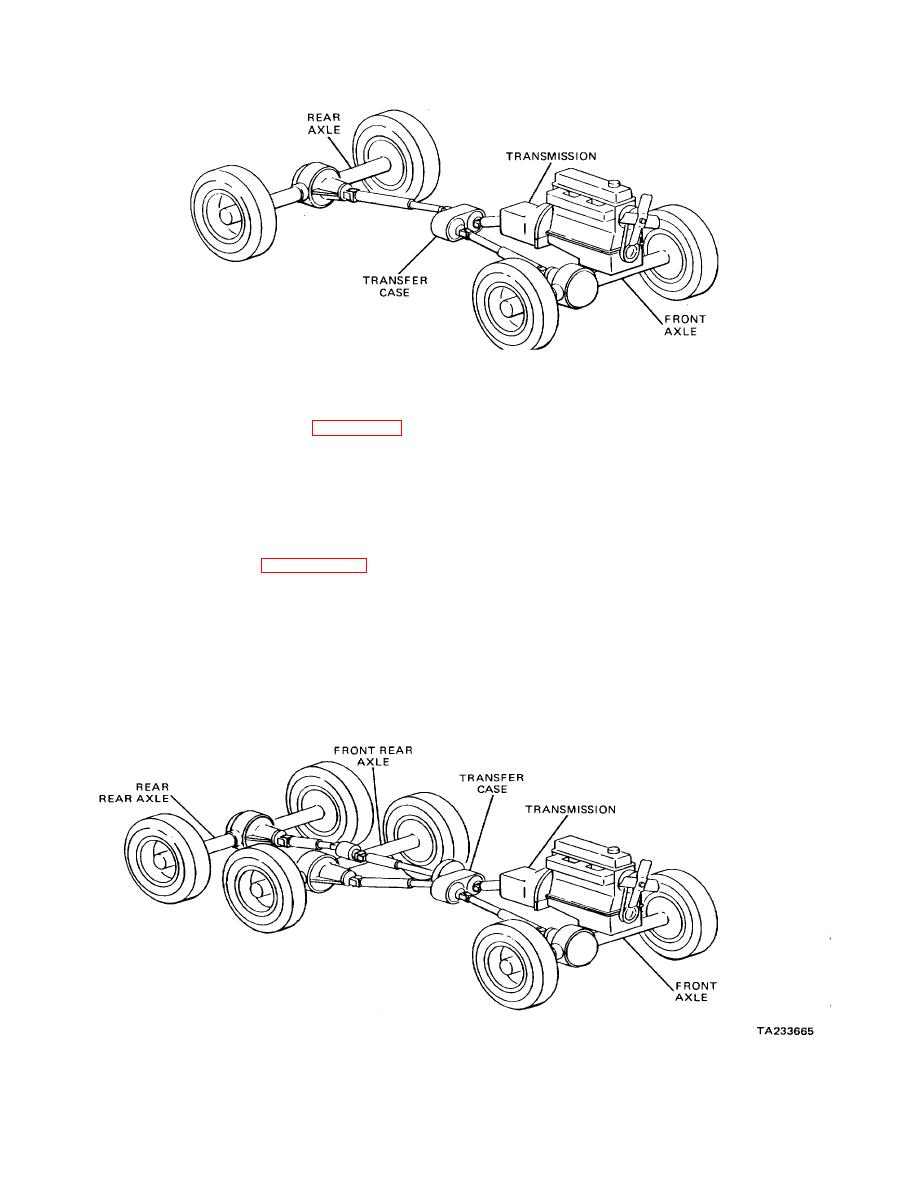
| Tweet |

Custom Search
|
|

|
||
 TM 9-8000
Figure 19-19. Typical Four-Wheel Drive Power Transmission
for operating under more rugged conditions, and
19-16. Six-Wheel Drive. A six-wheeled vehicle, in
therefore are of more sturdy construction and, in general,
which all six wheels drive, is shown in figure 19-20. This
provide for greater gear reduction.
design is common on many larger military vehicles.
Power is divided at the transfer case to all three axles.
Full-track vehicles are steered by varying the speed of
The differential and carrier on the forward rear axle is
one track in relation to the other, and this leads to the
moved to the right to allow for rearward rear axle drive
most Important differences between wheeled and
assemblies.
tracked vehicles. In some full-track vehicles, clutches
are used in the final drive to each sprocket. By engaging
19-17. Eight-Wheel Drive. A vehicle in which all eight
and disengaging the clutches, the relative speed of the
wheels drive is shown in figure 19-21.
In this
tracks can be controlled by the driver. This system is
configuration, both front axles are designed to steer and
satisfactory for slow-speed vehicles.
drive. This allows the vehicle to maneuver on soft
ground without sinking down.
In modern high-speed vehicles, steering is accomplished
by means of a controlled differential. This differential
19-18. Track Vehicle. The power trains in tracked
employs a system of plane-
vehicles perform the same function as in wheeled
vehicles. However, they are designed
Figure 19-20. Typical Six-Wheel Drive Power Transmission
19-16
|
||
 |
||